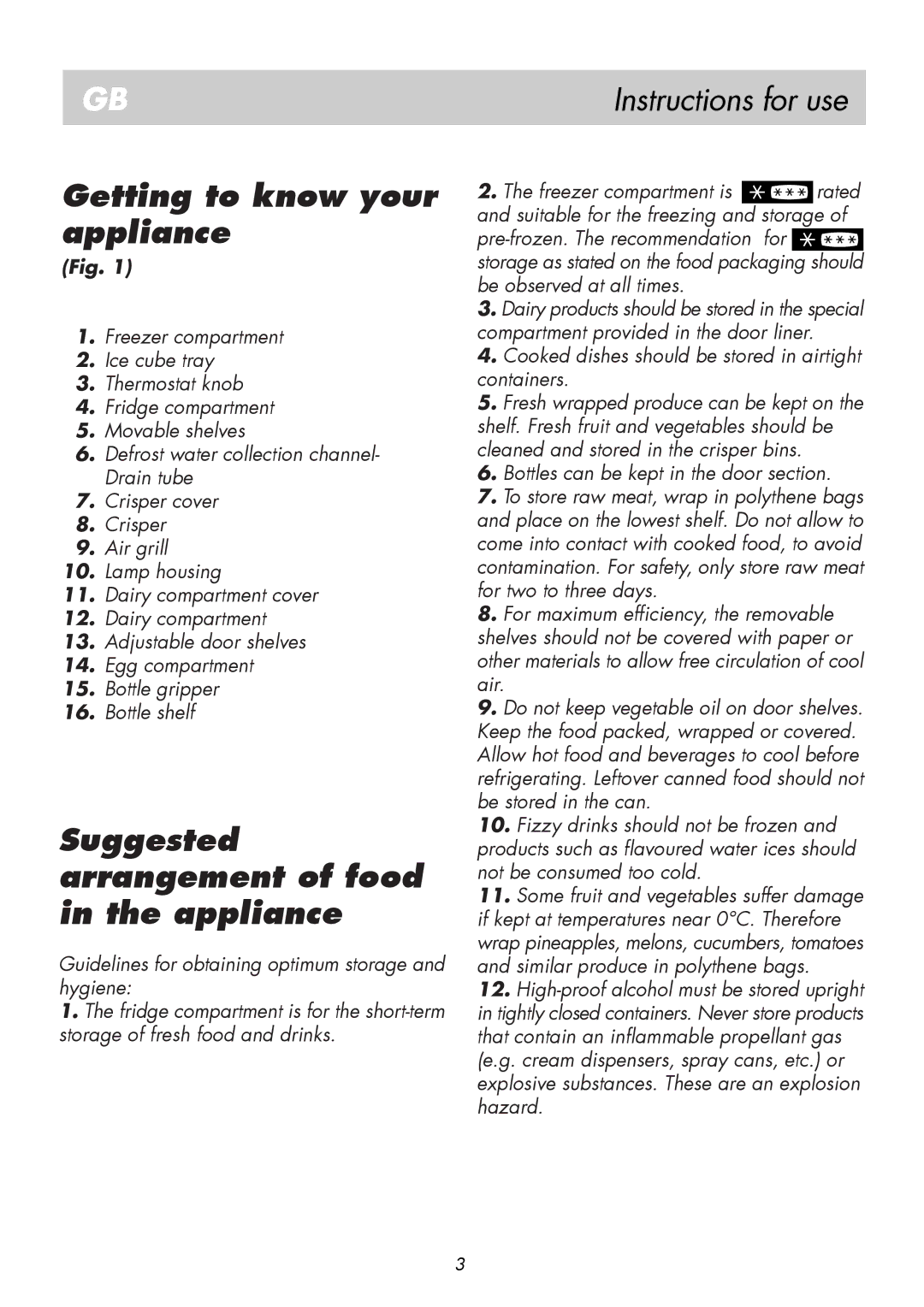
GB
Getting to know your appliance
(Fig. 1)
1.Freezer compartment
2.Ice cube tray
3.Thermostat knob
4.Fridge compartment
5.Movable shelves
6.Defrost water collection channel- Drain tube
7.Crisper cover
8.Crisper
9.Air grill
10.Lamp housing
11.Dairy compartment cover
12.Dairy compartment
13.Adjustable door shelves
14.Egg compartment
15.Bottle gripper
16.Bottle shelf
Suggested arrangement of food in the appliance
Guidelines for obtaining optimum storage and hygiene:
1.The fridge compartment is for the
Instructions for use
2.The freezer compartment is ![]() rated and suitable for the freezing and storage of
rated and suitable for the freezing and storage of ![]() storage as stated on the food packaging should be observed at all times.
storage as stated on the food packaging should be observed at all times.
3.Dairy products should be stored in the special compartment provided in the door liner.
4.Cooked dishes should be stored in airtight containers.
5.Fresh wrapped produce can be kept on the shelf. Fresh fruit and vegetables should be cleaned and stored in the crisper bins.
6.Bottles can be kept in the door section.
7.To store raw meat, wrap in polythene bags and place on the lowest shelf. Do not allow to come into contact with cooked food, to avoid contamination. For safety, only store raw meat for two to three days.
8.For maximum efficiency, the removable shelves should not be covered with paper or other materials to allow free circulation of cool air.
9.Do not keep vegetable oil on door shelves. Keep the food packed, wrapped or covered. Allow hot food and beverages to cool before refrigerating. Leftover canned food should not be stored in the can.
10.Fizzy drinks should not be frozen and products such as flavoured water ices should not be consumed too cold.
11.Some fruit and vegetables suffer damage if kept at temperatures near 0°C. Therefore wrap pineapples, melons, cucumbers, tomatoes and similar produce in polythene bags.
12.
3
